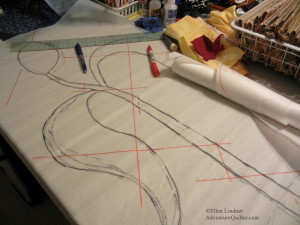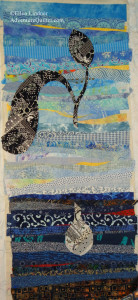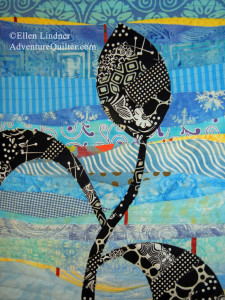Black and White and Fused All Over: Part Two
After experimenting with a new fusing technique, I was ready to try it on my quilt.
Click any image for a larger view
After drawing the needed shapes on paper backed fusible webbing, I began to place and fuse small pieces of black and white fabrics.
Then, I could place the larger shapes on my quilt. It all worked beautifully.
Soon, I was auditioning tiny pieces of red fabrics to add as accents. Things were progressing really well!
Until I washed out some markings.
Yep, the red fabric underneath bled. WHEN will I learn to prewash red fabrics?!? (They’re the only ones that ever give me problems.)
Thankfully, my collage technique allows me to just add new fabrics right on top of the old ones. No need for ripping out beforehand. So, it was a pretty quick fix.
I’m very happy with this piece. I’ll have final photos for you soon.
Ellen Lindner
P.S. No, I don’t normally prewash my fabrics. I know that’s breaking a quilt making rule. But, since I’m making wall hangings, my quilts will never be washed and I can get away with it. Usually. Here’s a glued collage where a red fabric also bled. In that case, I decided I liked it and added more “bleeding” with paint.




Just prewashing red fabric will not stop the bleeding. If there is more dye to release it will continue. Usually the kind of bleeding you are getting is from 2 wet fabrics touching each other for too long of a time. It is like taking a quilt out of the washer and just piling it on top until another load dries. Because the wet layers are touching for too long, some color might transfer. Turquoise is another that likes that wet environment. Maybe using a hair dryer to immediately dry the area after you remove the lines would keep this from happening.
Hi Wanda,
Thanks for the suggestion. I’ll have to give it a try.